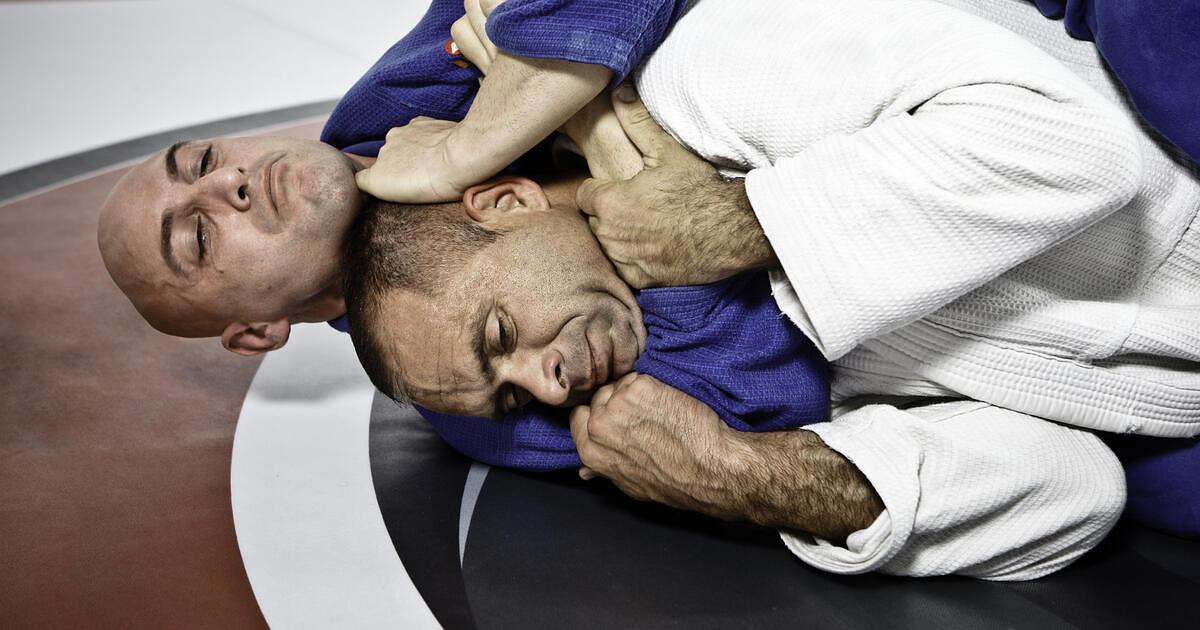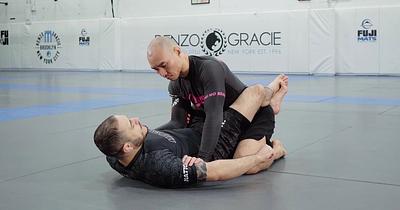BJJ Chokes vs Strangles: What's the Difference and Which One to Use?
by Team Digitsu
Updated: March 24, 2025

Among the most common submissions used in BJJ are "chokes," which can be further broken down into "chokes" or "strangles," depending on the mechanism of the hold. However, it's essential to understand the difference between these two types of submissions to apply and defend against them safely and effectively. In this article, we'll take a closer look at the mechanics and effectiveness of chokes and strangles in BJJ and explore how to apply and defend against these submissions.
Difference Between Chokes and Strangles in BJJ
Submissions like the rear naked choke, triangle choke, and arm triangle are called "chokes." However, knowing the difference between "air" chokes and "blood" strangles is crucial to know when to let go and not harm your training partners.
The definition of the word choke means having severe difficulty breathing because of a constricted or obstructed throat or a lack of air. These submissions aim to restrict breathing by applying pressure to the trachea, the windpipe that carries air from the nose and mouth to the lungs.
On the other hand, "blood" strangles involve cutting off blood flow to the brain from the heart. These submissions aim to restrict blood flow to the brain by applying pressure to the carotid arteries on both sides of the neck and carrying blood to the brain.
John Danaher, a renowned BJJ coach, makes a point to refer to most submissions as strangles and not chokes. This is because the term "choke" can be misleading and may not accurately convey the specific mechanism by which the submission works. By understanding the difference between chokes and strangles, you can better understand how to apply and defend against these submissions safely and effectively.
Mechanics of a Strangle in BJJ
A strangle is a submission that aims to restrict blood flow to the brain by applying pressure to the carotid arteries on either side of the neck. The mechanics of a strangle involve compressing the carotid arteries, which can cause a decrease in blood flow to the brain and ultimately render an opponent unconscious.
When an opponent is strangled, pressure is applied to the carotid arteries in the neck, restricting oxygen-rich blood from flowing to the brain. This oxygen reduction can cause the opponent to lose consciousness in as little as 5 -15 seconds. The time it takes for an opponent to become unconscious can vary depending on the individual, the amount of pressure applied, and the heart rate of your opponent.
Typically when you see someone "go out" or rendered unconscious in a training session, competition, or even during a move demonstration, it's from this mechanic.
It's important to note you should let go as soon as your opponent is accidentally rendered unconscious from strangulation. Holding for a long duration can lead to strokes, cardiac arrest, or even death.

Effectiveness of "Blood" Strangles in BJJ
Unlike other submissions like joint locks, strangles do not rely on the opponent's physical limitations to be effective. Even a large, strong, flexible, or tough opponent can be knocked out by a well-executed strangle. This can cause an opponent to lose consciousness even if they can continue fighting with broken limbs or other injuries.
Mechanics of an "air" Choke in BJJ
An "air" choke, also known as a tracheal choke, is a submission that aims to restrict airflow to the lungs by applying pressure to the trachea, the windpipe that carries air from the nose and mouth to the lungs. The mechanics of an air choke are similar to holding your breath underwater. It'd typically take 2-3 minutes before an adult is unconscious due to lack of airflow. This number would likely be shorter due to heavy breathing and high heart rate during a BJJ match.
In reality, in BJJ, your opponent is not tapping to "air" chokes due to an immediate threat of being unconscious. When an opponent is choked, the pressure applied to the trachea causes intense and immediate pain and causes your opponent to tap out very quickly.

Strangles Are Generally Safer Than Chokes in BJJ
Strangles, also known as carotid artery strangles, are generally considered safer. This is because chokes, particularly air chokes, can permanently damage the airways leading to death even after pressure is removed. When you hear of people dying from a choke, it's often due to an air choke.
An example is Eric Garner, who died in 2014 in New York City after being placed in a chokehold by a police officer. The incident brought attention to the dangers of air chokes and the potential for permanent damage to the airways.
On the other hand, strangles are generally considered less dangerous than chokes. However, if misapplied or held too long, strangles can cause injury or death.
Opponents can tough out damage or pain to their throat and retain consciousness for longer when choked, so it's essential to be aware of this and not harm your training partner. It's crucial to understand the mechanics and safety of chokes before attempting to use them in training or competition.
Examples of (Blood Chokes) Strangles in BJJ
Most "chokes" in BJJ, when properly applied, are "blood" chokes or strangles, such as:
- Rear Naked Choke
- Triangle Choke
- Cross Collar Choke
- Bow and Arrow (Back Cross Collar Choke)
- Arm Triangle
- Ezekiel Choke Back and Front (when applied to reach the far carotid artery)
- Guillotines (Deep variations)
Examples of Air Chokes in BJJ
The most common "air chokes" are variations of strangles, but the pressure is applied to the front of the throat instead of the carotid arteries on the sides of the neck:
- Ezekiel chokes from the back or front, but the pressure is applied to the front of the throat.
- Guillotines (some variations), such as arm-in / shallow variations when pressure is applied to the front of the throat, like 10-finger Guillotines.
- Gogoplata
- Short Chokes, or rear naked chokes, but the arm does not come all the way around.
Hybrid Chokes / Strangles in BJJ
Several submission holds can be classified as hybrid chokes or strangles. These types of submissions involve a combination of air choke pressure and blood strangle pressure.
For example, the Darce choke, Anaconda choke variations, and all the neckties can apply air choke pressure and/or blood strangle pressure in some circumstances. Similarly, the Ezekiel choke and even the rear naked choke can also be applied as "air" chokes if the other arm is not brought across to block the other carotid artery and instead applies crushing pressure to the throat.
Due to the risks associated with air chokes and the effectiveness of strangles, it is recommended to aim for strangling variation when applying these hybrid chokes. It's essential to drill these with partners to get that effect. You can apply the moves and adjust with a training partner to refine your technique.
The Paradox of Strangles vs. Chokes
There is a paradox regarding strangles versus chokes. On one hand, "air" chokes often result in faster taps from opponents due to the immediate pain they cause. However, rendering an opponent unconscious with an air choke takes much longer. On the other hand, strangles might take longer to make an opponent tap but are more likely to render them unconscious.
Air chokes can be more dangerous to your training partners as they can cause permanent damage to the airways. On the other hand, blood strangles are more likely to be useful in self-defense as they can render an opponent unconscious in seconds.
Therefore, it is recommended to favor the strangle variations over the choke variations when training BJJ. This is because strangles are generally considered safer and more effective than chokes. However, it's important to remember that even strangles can be dangerous if not applied correctly or held too long. Hence, it's crucial to understand the mechanics and safety of these submissions before attempting to use them in training or competition.


